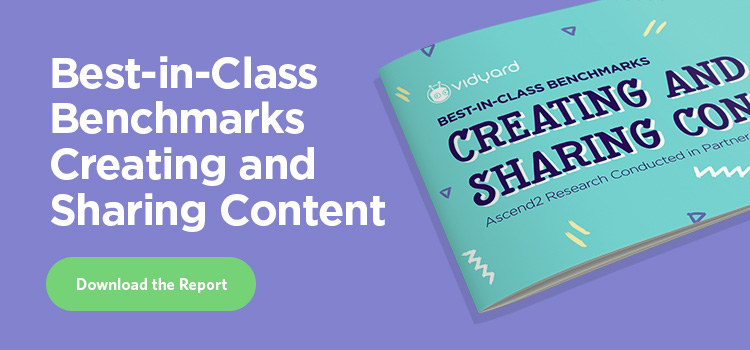Most of all, we want a sense of community. This allowed a single marketer to reach hundreds of thousands of people through email, and the power shift of growth moved from sales to marketing. Because automation, in the traditional sense, lacks community. When we started Gainsight, our market was so new that we couldn’t just build technology and products to go sell; we had to first help people define their strategy and processes and discover how Customer Success would fit within their organization. To build a community, at Gainsight we took a page from the marketing 1.0 playbook: live events. #Brand vs #automation. By placing all of this content on a microsite, using Vidyard, our conversations can continue after the lights have come on and the stage is empty. Sharing expertise and knowledge isn’t just beneficial for those individuals consuming the thought-leadership content, it also meets a third need for the person sharing. If we structure our initiatives around achievement and community properly, we create a platform for our customers to increase their authority. He is responsible for managing the company’s global marketing strategy, from demand generation to brand marketing, and is credited with creating the “Pulse” community of Customer Success leaders.
This post was originally published on Upshot.
Businesses don’t care about your content. They don’t read your blog, click on your ads, or buy your products or services. People do.
People are emotion-generating machines. Of course, we want to do well at our jobs, get promoted—but we also want to be entertained. We want to laugh and enjoy time with our friends and family. Most of all, we want a sense of community. That’s what modern B2B marketing lacks: the human factor.
Enter brand, or I should say: re-enter brand.
In the 1.0 marketing world of the 1990s, brand was king. VPs of marketing would throw logos on pens and host company tradeshows, while sales teams basically cannibalized growth. This was the “get a badge and move into ACME CORP headquarters and sell to that one customer for the rest of your life” era.
People are emotion-generating machines. What emotion does your #brand convey? @akennada @vidyard (Tweet this!)
Then came marketing automation in the early 2000s. Every online article and discussion was centered on the rise of the CMO and the use of automation as a means of scaling growth through technology. This allowed a single marketer to reach hundreds of thousands of people through email, and the power shift of growth moved from sales to marketing. But in this transfer, brand was pushed out almost completely.
Even today, if you search for B2B marketing best practices, 9 out of 10 articles are on demand gen, account based marketing (ABM), and these traditionally “growth-oriented practices” that were crystalized during that web 2.0 period.
What’s happened, however, is we’re all onto the trick, and we’re tired of getting emails. If you’re like me, you spend the first hour or so of every day deleting emails that are obviously sent via some type of marketing automation platform. Consumers—and I use that word deliberately—are tired of being automated.
Why? Because automation, in the traditional sense, lacks community. It lacks empathy. Customers want someone to listen to them and care about their unique struggles—not make broad assumptions based on their LinkedIn job title. They want value to be the driver of the conversation because value builds trust.
The demand gen answer to this problem is personalization at scale (ABM), but what it comes down to is how do we change the way the market thinks about our logos, executive team, and core value proposition? How do we move away from the “vendor” title and become a thought partner who’s genuinely there to help?
#B2B consumers are tired of being automated. They want value. They want #B2H @akennada @vidyard (Tweet this!)
Welcome to marketing 3.0: the rise of B2H (business-to-human). At Gainsight, for example, our goal is to celebrate the human behind the job title. As marketers, our role is to anchor around the person, the profession, and make them heroes.
The B2C world knows this. They have to, after all, because they’re selling to individuals, not “businesses.” But we’re all consumers—and that’s no different in B2B. Recently, however, we’ve seen forward-thinking B2B companies embracing this shift and recognizing that marketing efforts must be…

COMMENTS